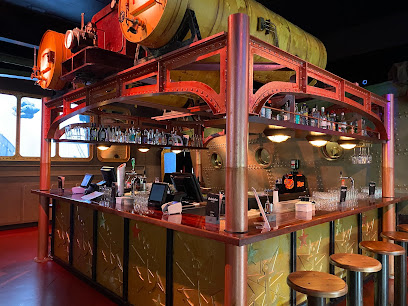
Abgeordnetenhaus Berlin: A Seat of History and Democracy
Explore Berlin's Abgeordnetenhaus: Witness German democracy in action within historic walls, discover the city's political heart, and delve into its rich past.
The Abgeordnetenhaus Berlin, or House of Representatives, is the seat of Berlin's state parliament, steeped in history and architectural beauty. Located in the Mitte district near Potsdamer Platz, it stands as a testament to Germany's political evolution. Originally built in the Italian High Renaissance style as the Prussian Landtag, the building has witnessed pivotal moments in German history, from the Weimar Republic to the division of Berlin and its eventual reunification. Today, visitors can explore its halls, learn about Berlin's governance, and appreciate the blend of historical significance and modern democracy embodied within its walls. Guided tours offer insights into the legislative process and the building's past, making it a compelling destination for those interested in politics, history, and architecture. The surrounding area, rich with landmarks and cultural institutions, enhances the experience, providing a comprehensive view of Berlin's vibrant city center.
A brief summary to Abgeordnetenhaus Berlin
- Niederkirchnerstraße 5, Berlin, Mitte, 10117, DE
- +493023250
- Visit website
Local tips
- Check the Abgeordnetenhaus website for tour schedules and availability, as tours may be limited or subject to change due to parliamentary sessions.
- Arrive early for guided tours, especially during peak tourist season, to secure your spot and avoid disappointment.
- Combine your visit with a trip to the nearby Topography of Terror documentation center to gain a deeper understanding of Berlin's 20th-century history.
- Take advantage of the free admission to the Abgeordnetenhaus and its exhibitions, making it an affordable and enriching experience.
- Consider purchasing a Berlin WelcomeCard for discounts on public transportation and other attractions, making it easier to explore the city.
Getting There
-
Public Transport
For the final approach via public transport, several options are available. From Potsdamer Platz, take the M41 bus towards Hauptbahnhof and alight at the Abgeordnetenhaus stop, directly adjacent to the building. Alternatively, from U-Bahn station Kochstraße (U6 line), walk east along Wilhelmstraße, then turn left onto Niederkirchnerstraße; the Abgeordnetenhaus will be on your right. A single ride ticket (AB zone) costs €3.80. A short trip ticket, valid for three stops on the U-Bahn or S-Bahn, or six stops on the bus or tram, costs €2.60.
-
Walking
If you are near Potsdamer Platz, the Abgeordnetenhaus is approximately a 10-15 minute walk. Head east on Leipziger Straße, then turn right onto Wilhelmstraße. Continue south, then turn left onto Niederkirchnerstraße. The Abgeordnetenhaus will be on your right. This is a straightforward and scenic walk through the heart of Berlin.
-
Taxi/Ride-Share
A taxi or ride-share from Potsdamer Platz to the Abgeordnetenhaus will take approximately 5-10 minutes, depending on traffic. Expect to pay around €8-€12 for the ride. Be sure to specify 'Abgeordnetenhaus, Niederkirchnerstraße 5' as your destination.
Discover more about Abgeordnetenhaus Berlin
Iconic landmarks you can’t miss
DDR Watch Tower
0.1 km
Explore the DDR Watch Tower in Berlin, a significant historical landmark that embodies the city's Cold War legacy and the struggles of division.
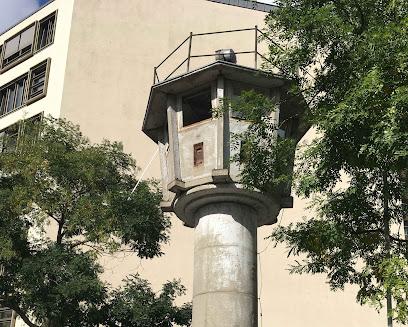
Wilhelmstraße
0.2 km
Explore Wilhelmstraße in Berlin: a historic thoroughfare, once the heart of German power, now a place of remembrance and reflection on the nation's complex past.
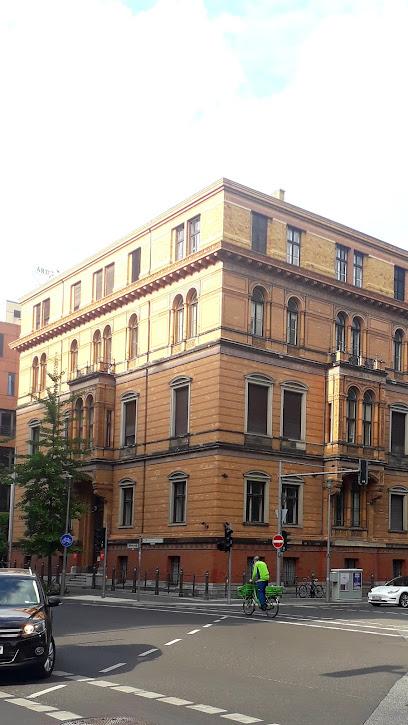
Leipziger Pl.
0.3 km
Experience the blend of modernity and history at Leipziger Platz, Berlin's vibrant urban hub filled with shops, dining, and cultural events.
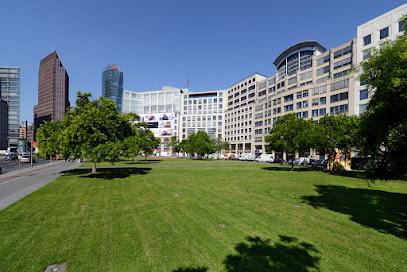
Zimmerstraße 97
0.4 km
Explore the historic Zimmerstraße 97 in Berlin's Mitte district, a symbol of the city's rich cultural heritage and dynamic urban life.
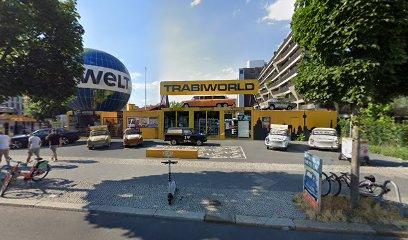
Anhalter Bahnhof
0.5 km
Discover the architectural beauty and historical significance of Anhalter Bahnhof, Berlin's iconic train station and a symbol of the city's rich heritage.
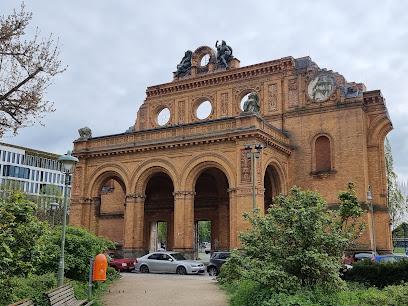
Die Farnmauer
0.5 km
Discover Berlin's hidden oasis: Die Farnmauer, a unique vertical garden offering a tranquil escape in the heart of the city's vibrant Friedrichshain-Kreuzberg district.

Checkpoint Charlie
0.6 km
Discover Checkpoint Charlie, Berlin's iconic historical landmark that symbolizes the city's Cold War past and offers a unique glimpse into its rich history.

Friedrichstraße 43
0.6 km
Immerse yourself in the architectural beauty and historical significance of Friedrichstraße 43, a must-visit landmark in the heart of Berlin.
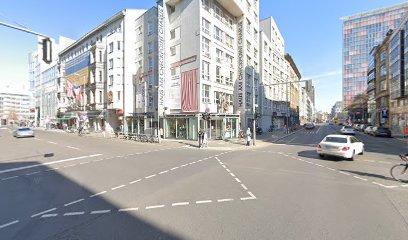
Potsdamer Str. 4
0.7 km
Discover the architectural beauty of Potsdamer Str. 4 in Berlin's Mitte district, a blend of history and modern design perfect for every traveler.
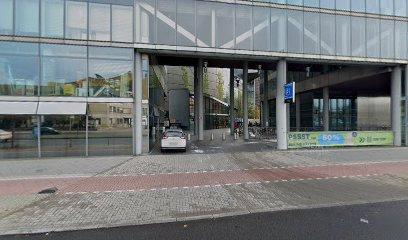
Memorial to Homosexuals Persecuted Under Nazism
0.7 km
Discover the poignant Memorial to Homosexuals Persecuted Under Nazism in Berlin, a powerful tribute to resilience and remembrance of the LGBTQ+ community.

Memorial to the Murdered Jews of Europe
0.7 km
Discover the profound history and solemn beauty of the Memorial to the Murdered Jews of Europe in Berlin, a tribute that resonates deeply with visitors.
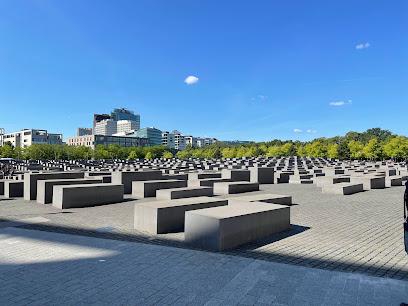
Zimmerstraße
0.7 km
Discover the historic Zimmerstraße in Berlin, where past and present intertwine amidst vibrant culture and captivating landmarks.
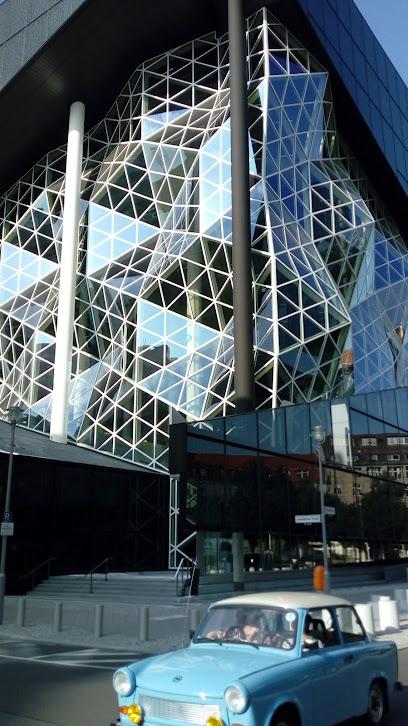
Goethe Monument
0.7 km
Discover the Goethe Monument in Berlin, a stunning tribute to Germany's literary genius amidst the city's vibrant cultural landscape.
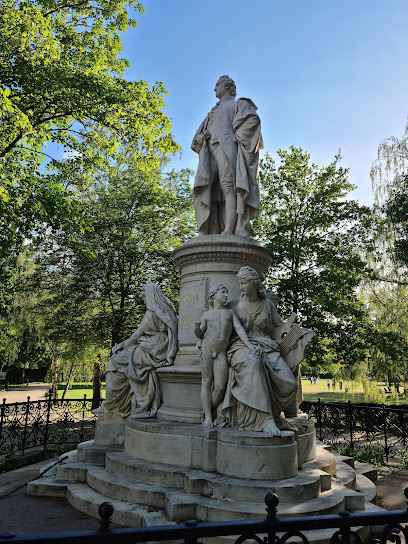
Landwehr Canal
0.8 km
Discover the Landwehr Canal in Berlin, a serene waterway perfect for leisurely strolls, outdoor activities, and vibrant local culture amidst stunning views.
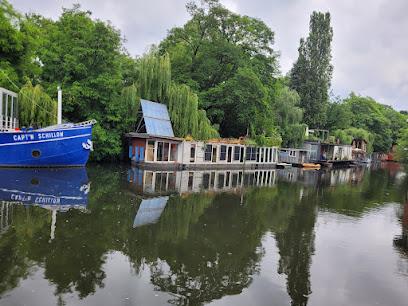
British Embassy Berlin
0.8 km
Explore the British Embassy in Berlin - a blend of modern architecture and rich diplomatic history in the heart of Germany.

Unmissable attractions to see
Hardenberg-Denkmal
0.1 km
Explore the Hardenberg-Denkmal in Berlin, a stunning tribute to the influential Prussian statesman and a serene spot for reflection amidst the city's vibrant energy.

Gropius Bau
0.1 km
Explore the Gropius Bau, Berlin's premier modern art museum, and immerse yourself in a vibrant cultural experience within a stunning architectural masterpiece.

German Spy Museum
0.2 km
Discover the intriguing world of espionage at the German Spy Museum in Berlin, where history and technology converge for an unforgettable experience.
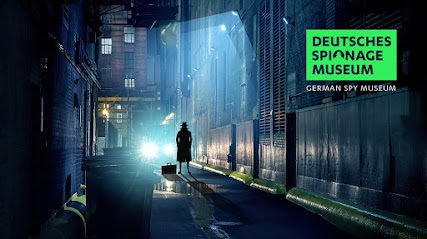
Oldie Käfer Tour Berlin
0.2 km
Discover Berlin's rich history and vibrant culture in vintage Volkswagen Beetles with Oldie Käfer Tours, offering a unique sightseeing experience.

Topography of Terror
0.2 km
Explore the profound history behind the Nazi regime at the Topography of Terror in Berlin, a must-visit for history enthusiasts and tourists alike.

Leipziger Platz
0.2 km
Explore the vibrant atmosphere of Leipziger Platz in Berlin, a bustling plaza surrounded by shops, eateries, and historical landmarks.
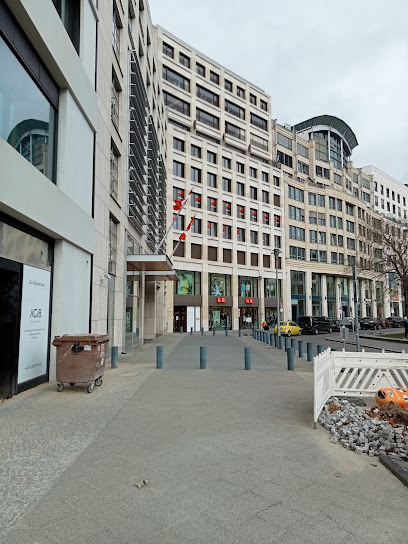
DIE MAUER | THE WALL - Das Museum am Leipziger Platz
0.2 km
Discover the history and impact of the Berlin Wall at DIE MAUER | THE WALL Museum, a must-visit for history enthusiasts in Berlin.
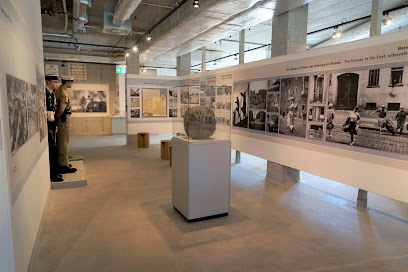
Deutschlandmuseum
0.2 km
Explore Germany's history and technology at Deutschlandmuseum, an immersive experience for all ages in the heart of Berlin.
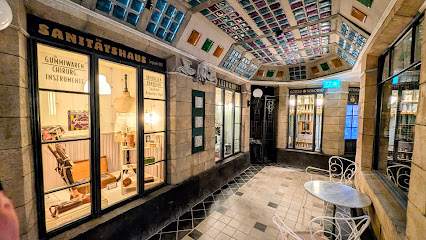
Detlev-Rohwedder-Haus
0.2 km
Explore the Detlev-Rohwedder-Haus, a pivotal historical landmark in Berlin, offering a glimpse into the city's impactful past and architectural beauty.
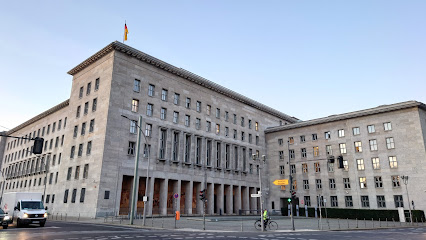
Denkmal zur Erinnerung an den Aufstand des 17. Juni 1953
0.3 km
Explore the Memorial to the Uprising of June 17, 1953, in Berlin—a poignant tribute to the fight for freedom and justice in German history.
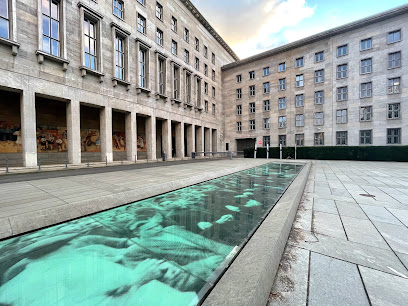
Platz des Volksaufstandes von 1953
0.3 km
Explore the historic Platz des Volksaufstandes von 1953, a memorial park in Berlin that commemorates the struggle for freedom and democracy.

Showbühne Berlin
0.3 km
Discover the magic of performing arts at Showbühne Berlin, where stunning performances meet exquisite dining in a vibrant cultural atmosphere.
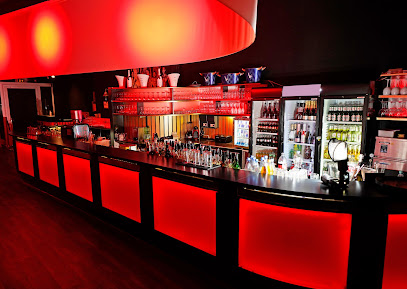
SIXX PAXX Theater Berlin
0.3 km
Discover the captivating performances at SIXX PAXX Theater Berlin, where artistry meets entertainment in a vibrant cultural setting.
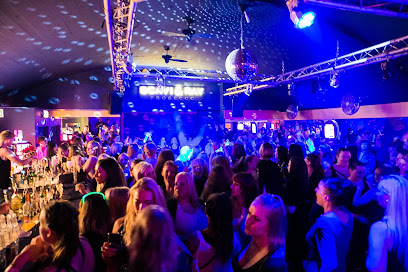
Trabi-Safari Berlin
0.3 km
Experience Berlin's history and culture in a fun, unique way with Trabi-Safari, the ultimate sightseeing tour in iconic Trabant cars.
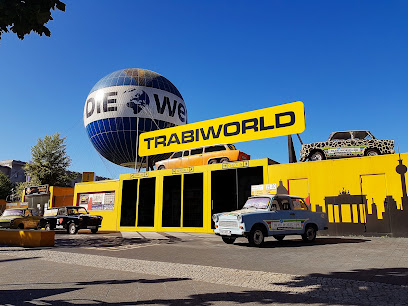
Berlin and car culture - Walking Tour ESP/ENG
0.3 km
Discover Berlin's automotive heritage, from historic milestones at Potsdamer Platz to the future of mobility, on this unique walking tour.
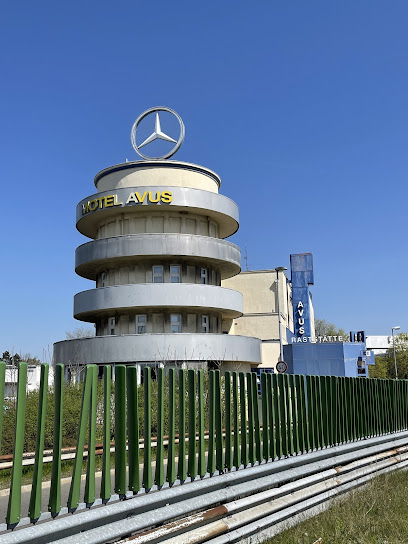
Essential places to dine
Johnny's Bar - Karibisches Restaurant
0.5 km
Experience authentic Caribbean flavors at Johnny's Bar in Berlin - where every dish tells a story and every sip transports you to paradise.
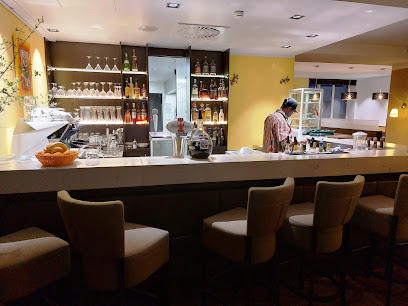
Restaurant Facil
0.5 km
Experience culinary artistry at Restaurant Facil in Berlin – where exquisite flavors meet modern elegance in fine dining.
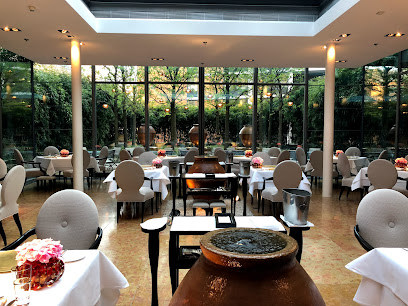
Restaurant Maximilians Berlin
0.7 km
Experience authentic Bavarian cuisine at Restaurant Maximilians in Berlin's Mitte district—where every meal is a celebration of flavor.
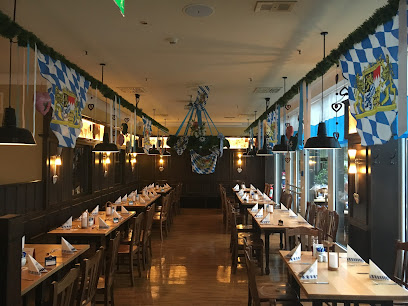
Nobelhart & Schmutzig
0.7 km
Experience exquisite fine dining at Nobelhart & Schmutzig in Berlin - where traditional German cuisine meets innovative culinary artistry.

Restaurant Tim Raue
0.7 km
Experience culinary mastery at Restaurant Tim Raue - where Asian flavors meet innovative fine dining in Berlin's vibrant heart.

Lorenz Adlon Esszimmer
0.9 km
Experience unparalleled fine dining at Lorenz Adlon Esszimmer in Berlin – where modern European cuisine meets historic elegance.
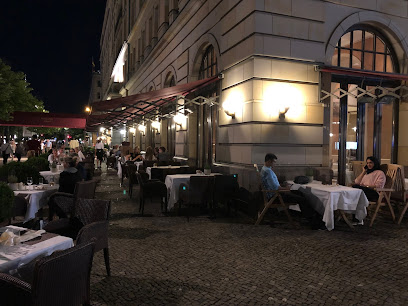
Bocca di Bacco
0.9 km
Experience authentic Italian cuisine at Bocca di Bacco in Berlin – where tradition meets elegance in every dish.
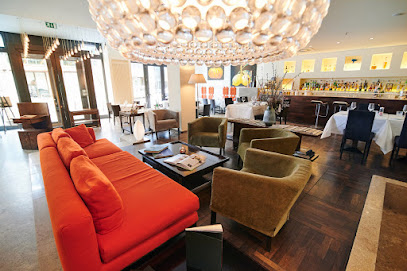
GOLVET
1.0 km
Experience unparalleled fine dining at GOLVET, where modern European cuisine meets breathtaking views in the heart of Berlin.
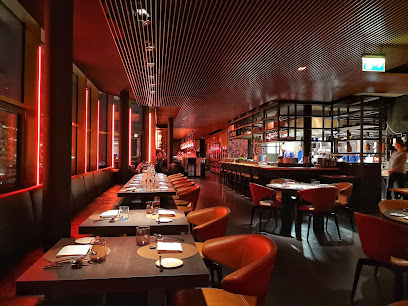
Charlotte & Fritz
1.0 km
Experience the pinnacle of fine dining at Charlotte & Fritz, where exquisite flavors meet elegant ambiance in Berlin's Mitte district.

Nante-Eck
1.1 km
Experience authentic German cuisine at Nante-Eck in Berlin’s Mitte district—where tradition meets taste in a cozy atmosphere.

BLESS Restaurant
1.2 km
Experience the vibrant fusion of Vietnamese and Asian cuisine at BLESS Restaurant in Berlin's Mitte district.
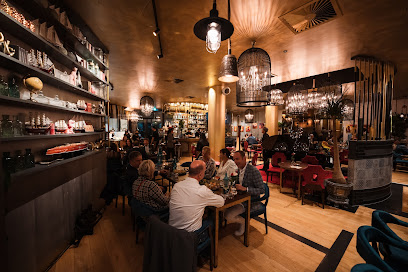
Restaurant FOREIGN AFFAIRS
1.4 km
Discover authentic Austrian cuisine in Berlin's Mitte district at Restaurant FOREIGN AFFAIRS – where tradition meets taste.
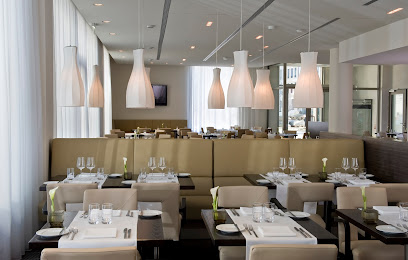
Berliner Republik
1.5 km
Discover Berliner Republik: A Culinary Haven in Berlin's Mitte District Offering Authentic German Cuisine and Lively Atmosphere.
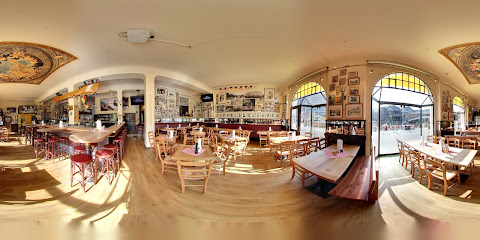
Grill Royal
1.7 km
Experience exceptional steaks and vibrant ambiance at Grill Royal in Berlin’s Mitte district.

Boulevard Friedrichstrasse
1.7 km
Experience authentic German cuisine at Boulevard Friedrichstrasse, where tradition meets taste in the heart of Berlin.
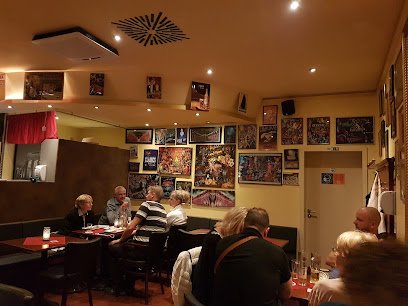
Markets, malls and hidden boutiques
I love Berlin
0.3 km
Explore 'I Love Berlin' for unique souvenirs and gifts that embody the vibrant culture and spirit of Berlin, located in the heart of the city.

Berlin Loves You
0.3 km
Explore unique souvenirs and local treasures at 'Berlin Loves You', the quintessential store for capturing the spirit of Berlin.
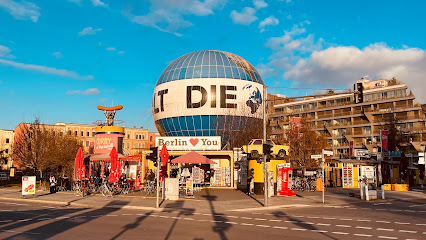
Mall of Berlin
0.3 km
Explore the Mall of Berlin: A shopping haven in the heart of the city with endless retail, dining, and entertainment options.
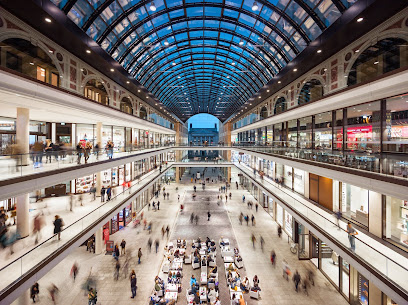
Vielfach Berlin -Das Kreativkaufhaus-
0.4 km
Explore Vielfach Berlin, a unique gift shop and art gallery offering handcrafted souvenirs and local art that capture Berlin's vibrant creative spirit.
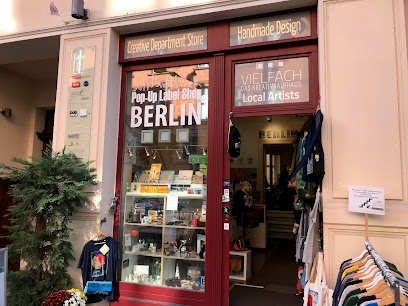
The Playce
0.5 km
Experience shopping bliss at The Playce in Berlin, where high-quality stores meet delightful dining and vibrant entertainment.
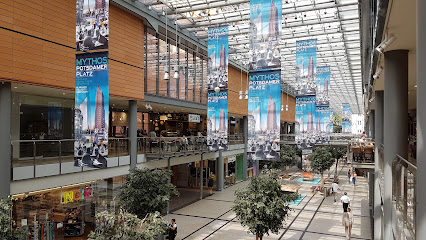
Wolford Boutique Berlin
0.8 km
Experience luxury and elegance at Wolford Boutique Berlin, your go-to destination for exquisite women's fashion and lingerie.
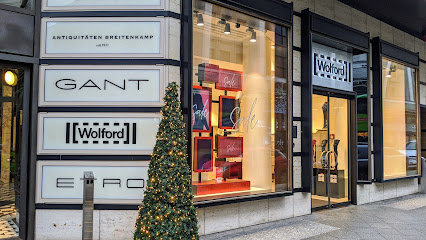
Galeries Lafayette
0.9 km
Discover the allure of luxury shopping and gourmet dining at Galeries Lafayette in the heart of Berlin, a must-visit for every traveler.
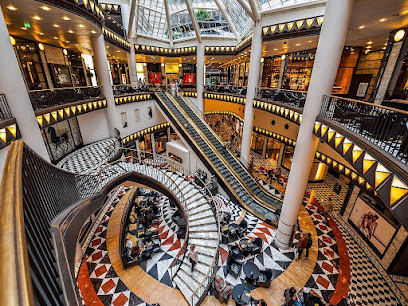
BERLIN STORE
1.0 km
Discover unique souvenirs and local crafts at the Berlin Store, the perfect stop for tourists seeking a piece of the city's vibrant culture.
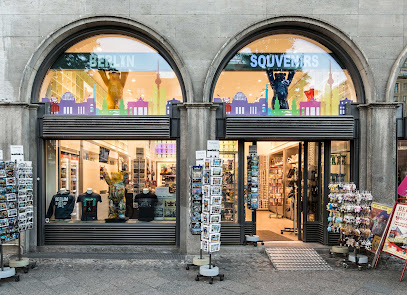
The Square Berlin East
1.1 km
Explore a unique blend of fashion, literature, and home decor at The Square Berlin East, a boutique gem in the heart of Berlin's Mitte district.

Andreas Murkudis
1.3 km
Explore avant-garde fashion at Andreas Murkudis, a unique clothing store in Berlin's Mitte district showcasing curated collections.

Shop Passage im Humboldt Forum
1.7 km
Explore a captivating selection of gifts and unique souvenirs at Shop Passage im Humboldt Forum, a must-visit destination in Berlin.
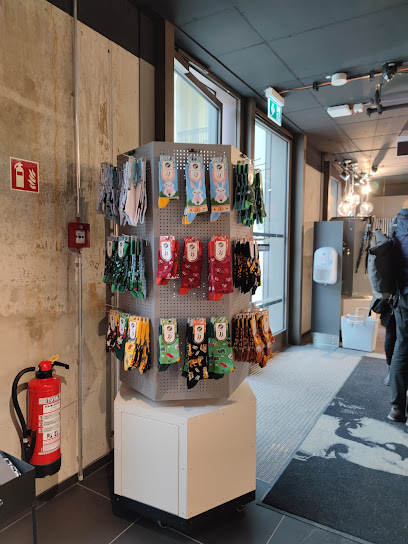
Kashmir Boutique
2.0 km
Discover the charm of Kashmir Boutique in Berlin, where exquisite textiles and handcrafted goods celebrate the rich heritage of Kashmir.
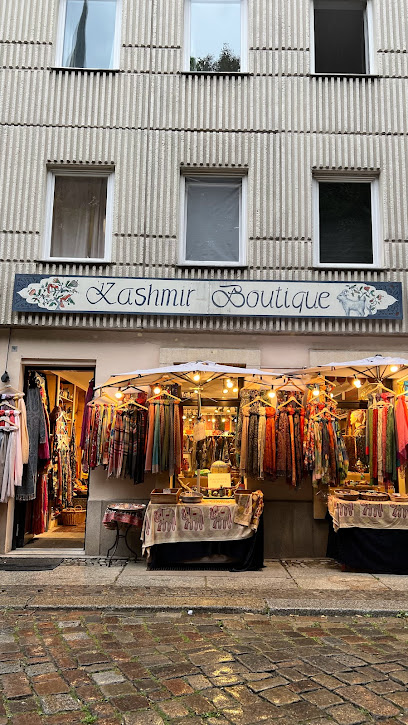
Redbear Berlin
2.0 km
Explore Redbear Berlin, a stylish boutique offering unique fashion pieces in the vibrant Mitte district, perfect for discerning shoppers.

PICKNWEIGHT - VINTAGE KILO STORE
2.0 km
Explore Berlin's premier vintage kilo store for unique clothing finds, where fashion meets sustainability in a fun shopping experience.
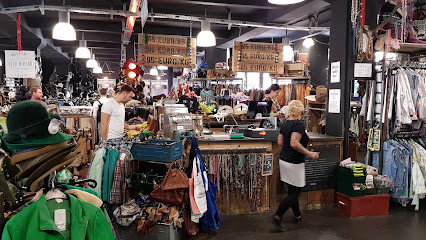
For Kings and Queens
2.1 km
Explore the eclectic charm of For Kings and Queens, Berlin's premier vintage clothing store nestled in the heart of vibrant Kreuzberg.
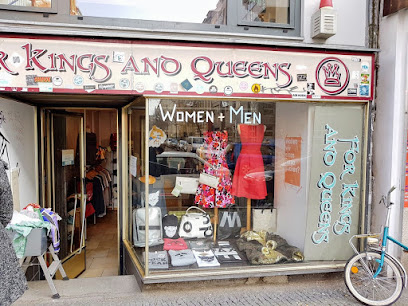
Essential bars & hidden hideouts
The Curtain Club
0.5 km
Experience elegance at The Curtain Club, Berlin's premier bar with exquisite cocktails and a chic atmosphere in the heart of Potsdamer Platz.
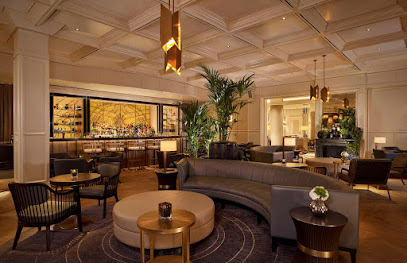
Posh Bar
0.6 km
Discover the elegance of Posh Bar in Berlin, where expertly crafted cocktails meet a chic atmosphere in the heart of the city's nightlife.
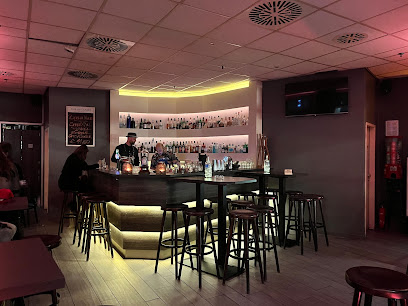
Charlie's Beach
0.6 km
Discover the perfect blend of relaxation and excitement at Charlie's Beach, a vibrant bar in Berlin's Mitte district with delightful drinks and a lively atmosphere.
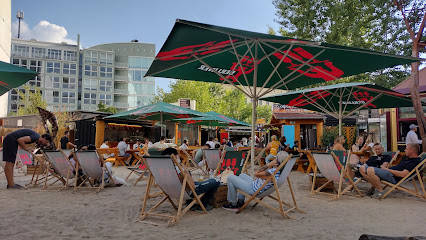
Newton Bar
0.9 km
Experience the vibrant nightlife of Berlin at Newton Bar, where stylish cocktails and a chic atmosphere await in Mitte.
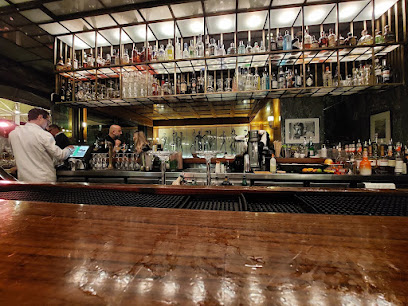
Windhorst
1.2 km
Experience Berlin's vibrant nightlife at Windhorst, an upscale cocktail bar serving exquisite drinks in a stylish atmosphere in the heart of Mitte.
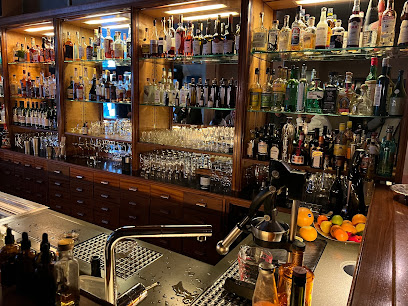
Victoria Bar
1.4 km
Experience the vibrant nightlife of Berlin at Victoria Bar, known for its exquisite cocktails and stylish atmosphere.
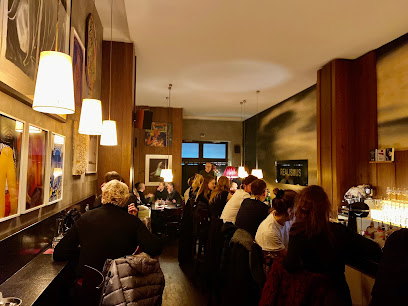
meisterschueler
1.7 km
Discover Meisterschueler in Berlin – a captivating cocktail bar that intertwines art and mixology for an unforgettable experience.
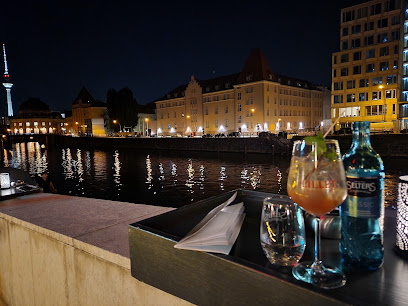
The Unique Bar Berlin
1.8 km
Discover the vibrant nightlife at The Unique Bar Berlin, where exquisite cocktails and a stylish atmosphere await you in the heart of the city.
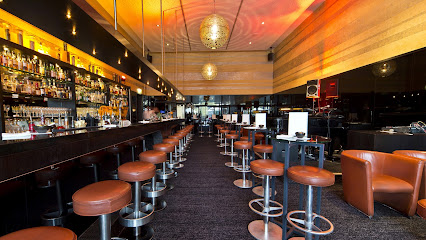
Clash
1.8 km
Discover the vibrant nightlife at Clash in Berlin, where affordable drinks and great music create the perfect pub experience.
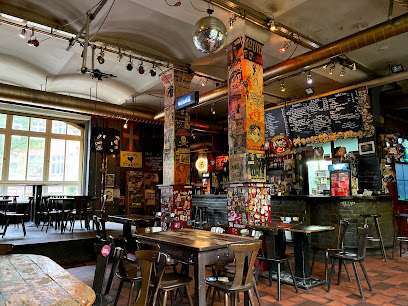
LIMONADIER Cocktailbar
1.9 km
Discover LIMONADIER Cocktailbar, where innovative cocktails and a vibrant atmosphere collide in the heart of Berlin's nightlife.
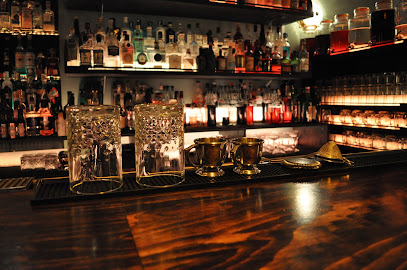
Destille Kreuzberg
2.0 km
Discover the heart of Berlin's nightlife at Destille Kreuzberg, a lively pub offering an extensive drink menu and vibrant atmosphere.
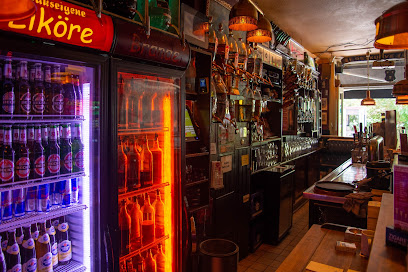
X-Terrain
2.1 km
Discover the eclectic vibe of X-Terrain, a unique bar in Berlin's Mitte with creative cocktails and a lively atmosphere perfect for nightlife enthusiasts.

TheCoven Bar
2.1 km
Discover the allure of TheCoven Bar, a cocktail haven in the heart of Berlin's Mitte district, where innovative drinks meet enchanting ambiance.
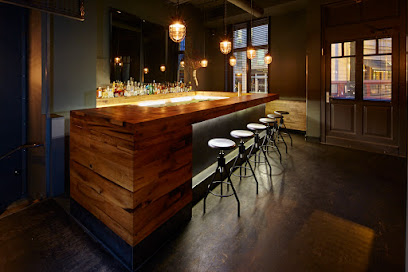
Bar Amélie
2.1 km
Discover Berlin's vibrant cocktail scene at Bar Amélie, where expertly crafted drinks meet a cozy atmosphere in the heart of the city.
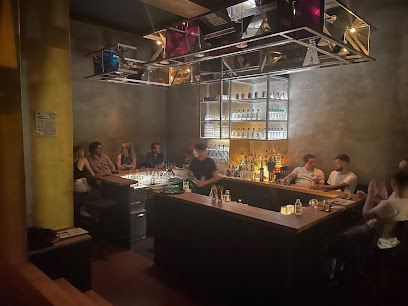
Berlin Icebar
2.1 km
Discover the magic of Berlin Icebar, where cocktails meet ice sculptures for a unique nightlife experience in the heart of the city.
